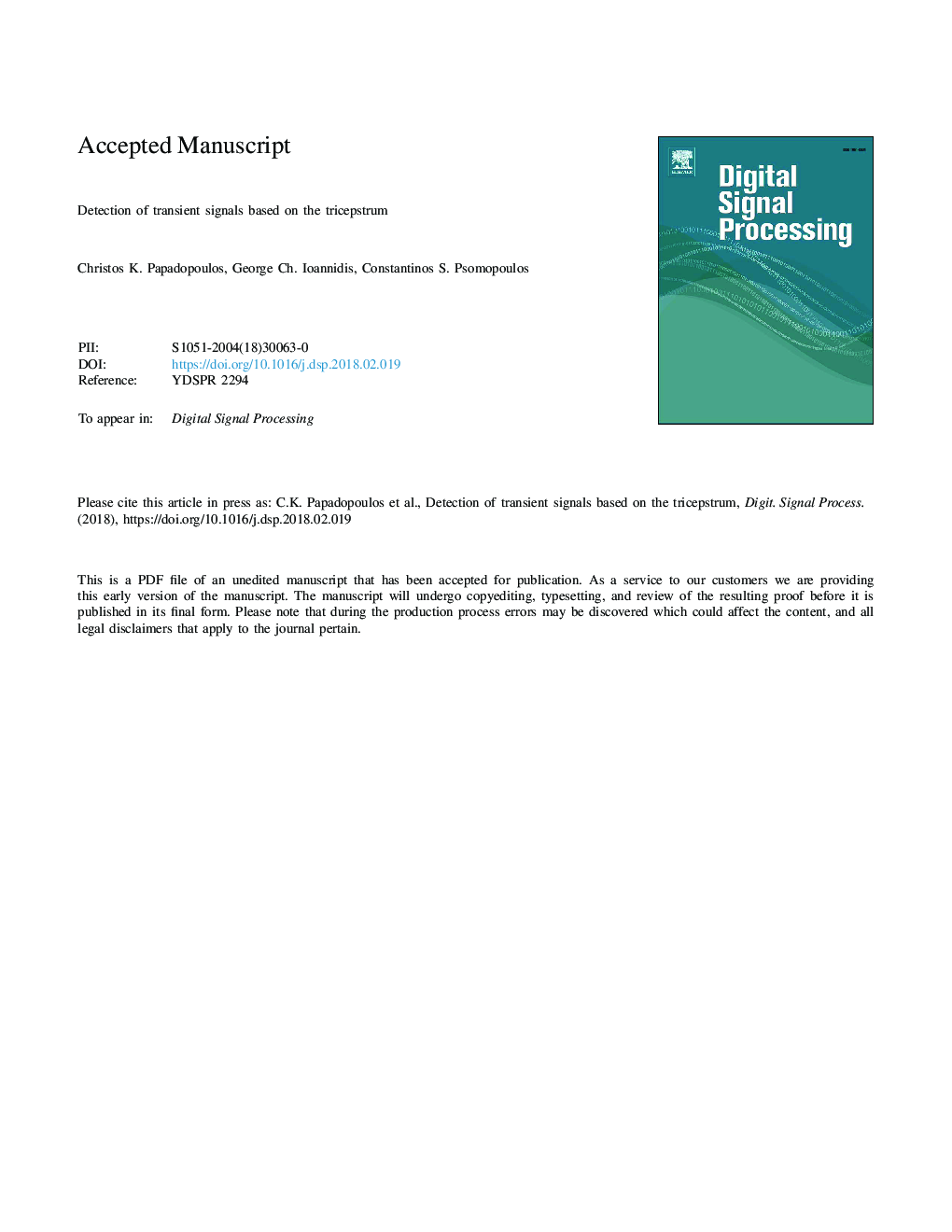| Article ID | Journal | Published Year | Pages | File Type |
|---|---|---|---|---|
| 6951731 | Digital Signal Processing | 2018 | 65 Pages |
Abstract
In this paper, the problem of detecting transient signals of unknown waveforms and arrival times embedded in white Gaussian noise is addressed. The use of the cepstrum coefficients of the fourth order correlations of the transient signal for forming a detection statistic is demonstrated. It is considered both a batch and adaptive approach for the detection of the signal which is assumed to satisfy a linear constant coefficient difference equation. The adaptive approach is a least squares realization based on Q-R decomposition of the fourth order statistics matrix involved in the computation of the cepstrum coefficients. Their performance is compared in terms of probability of detection and probability of false alarm with the conventional energy detector by means of Monte-Carlo simulations and improved performance is demonstrated. It is shown that the adaptive approach allows for detection of short length transients which are of unknown arrival times using a single data record even before the whole amount of data becomes available. The Q-R decomposition offers good numerical properties when fourth order statistics are involved and in contrast to the energy detector the proposed receiver has false alarm rate independent of the noise if it is of zero mean and independent, identically, distributed (i.i.d).
Related Topics
Physical Sciences and Engineering
Computer Science
Signal Processing
Authors
Christos K. Papadopoulos, George Ch. Ioannidis, Constantinos S. Psomopoulos,
